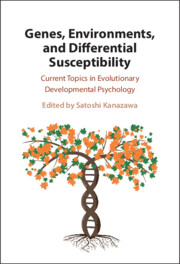Refine search
Actions for selected content:
430 results
Chapter 3 - Risk Factors for Childhood Psychopathology
-
-
- Book:
- Seminars in Child and Adolescent Psychiatry
- Published online:
- 10 October 2025
- Print publication:
- 30 October 2025, pp 34-48
-
- Chapter
- Export citation
A systematic review of stress-adapted skills and hidden talents in individuals who faced early adversity
-
- Journal:
- Development and Psychopathology , First View
- Published online by Cambridge University Press:
- 24 October 2025, pp. 1-16
-
- Article
- Export citation
Differential effects of childhood maltreatment types and timing on psychopathology in formerly out-of-home placed young adults
-
- Journal:
- European Psychiatry / Accepted manuscript
- Published online by Cambridge University Press:
- 23 October 2025, pp. 1-30
-
- Article
-
- You have access
- Open access
- Export citation
High intelligence is not associated with a greater propensity for mental health disorders – CORRIGENDUM
-
- Journal:
- European Psychiatry / Volume 68 / Issue 1 / 2025
- Published online by Cambridge University Press:
- 23 September 2025, e136
-
- Article
-
- You have access
- Open access
- HTML
- Export citation
Maltreatment effects on cognitive control functional connectivity across adolescence: Prospective links to young adult mental health
-
- Journal:
- Development and Psychopathology , First View
- Published online by Cambridge University Press:
- 16 September 2025, pp. 1-13
-
- Article
-
- You have access
- Open access
- HTML
- Export citation

Genes, Environments, and Differential Susceptibility
- Current Topics in Evolutionary Developmental Psychology
-
- Published online:
- 04 September 2025
- Print publication:
- 18 September 2025
Development and validation of the Revised Epistemic Trust, Mistrust and Credulity Questionnaire (ETMCQ-R)
-
- Journal:
- BJPsych Open / Volume 11 / Issue 5 / September 2025
- Published online by Cambridge University Press:
- 01 September 2025, e191
-
- Article
-
- You have access
- Open access
- HTML
- Export citation
Neuroimaging genetics and developmental psychopathology: A systematic review
-
- Journal:
- Development and Psychopathology , First View
- Published online by Cambridge University Press:
- 01 September 2025, pp. 1-23
-
- Article
- Export citation
Cannabis use is associated with changes in psychological and functional well-being during young adulthood: evidence from self-reports and hair analyses
-
- Journal:
- Psychological Medicine / Volume 55 / 2025
- Published online by Cambridge University Press:
- 26 August 2025, e246
-
- Article
-
- You have access
- Open access
- HTML
- Export citation
Distinctions in buffering and exacerbating associations between parent and peer relationship quality and adolescents’ psychopathology based on maltreatment status
-
- Journal:
- Development and Psychopathology , First View
- Published online by Cambridge University Press:
- 18 August 2025, pp. 1-12
-
- Article
-
- You have access
- Open access
- HTML
- Export citation
Examining whether inflammation mediates effects of genetic risk and trauma on psychopathology
-
- Journal:
- BJPsych Open / Volume 11 / Issue 5 / September 2025
- Published online by Cambridge University Press:
- 15 August 2025, e181
-
- Article
-
- You have access
- Open access
- HTML
- Export citation
3 - Phenomenology and Subjective Experience of Catatonia: Clinical Cases
-
- Book:
- Catatonia
- Published online:
- 26 July 2025
- Print publication:
- 14 August 2025, pp 30-46
-
- Chapter
- Export citation
Advancing measurement-based care through triangle of care: Development and feasibility of the Transdiagnostic Global Impression – Psychopathology scale for patients and informants
-
- Journal:
- European Psychiatry / Volume 68 / Issue 1 / 2025
- Published online by Cambridge University Press:
- 05 August 2025, e118
-
- Article
-
- You have access
- Open access
- HTML
- Export citation
Investigating risk factor and consequence accounts of executive functioning impairments in psychopathology: an 8-year study of at-risk individuals in Brazil
-
- Journal:
- Psychological Medicine / Volume 55 / 2025
- Published online by Cambridge University Press:
- 14 July 2025, e192
-
- Article
-
- You have access
- Open access
- HTML
- Export citation
9 - When Do Personality Traits Become Pathological?
- from Part II - Contemporary Approaches to Traditional Conceptual Perspectives
-
-
- Book:
- Conceptualizing Personality Disorder
- Published online:
- 25 June 2025
- Print publication:
- 10 July 2025, pp 160-178
-
- Chapter
- Export citation
General Psychopathology by Karl Jaspers
- Part of
-
- Journal:
- BJPsych Advances , FirstView
- Published online by Cambridge University Press:
- 08 July 2025, pp. 1-3
-
- Article
- Export citation
Chapter 12 - On the Meaningfulness of Disturbance
- from Part IV - Meaning and Disturbance
-
- Book:
- The Development and Organization of Meaning
- Published online:
- 11 June 2025
- Print publication:
- 26 June 2025, pp 157-174
-
- Chapter
- Export citation
Low household income and adolescent mental health
-
- Journal:
- Development and Psychopathology , First View
- Published online by Cambridge University Press:
- 11 June 2025, pp. 1-12
-
- Article
-
- You have access
- Open access
- HTML
- Export citation
Chapter 2 - What Is Phenomenology?
- from Part I - Towards Psychiatric Formulation
-
- Book:
- Psychiatry and Human Nature
- Published online:
- 03 May 2025
- Print publication:
- 22 May 2025, pp 17-28
-
- Chapter
- Export citation
Impact of young adult life transitions on adult mental health problems: a propensity score analysis
-
- Journal:
- Psychological Medicine / Volume 55 / 2025
- Published online by Cambridge University Press:
- 19 May 2025, e152
-
- Article
-
- You have access
- Open access
- HTML
- Export citation
